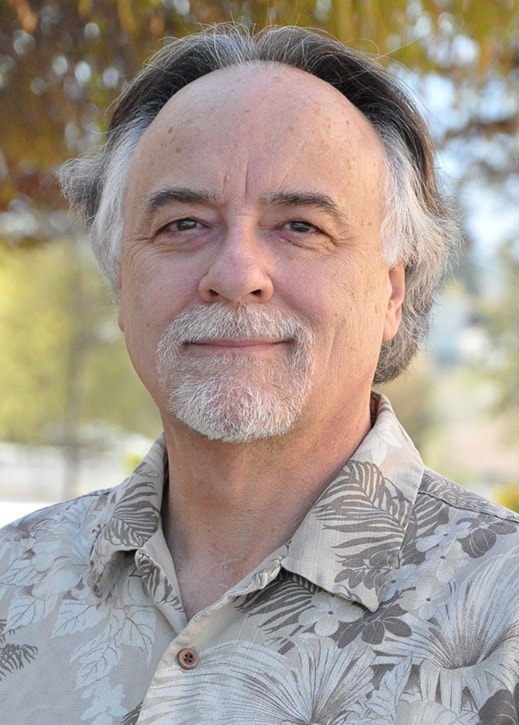A lot of new technology involves things that change, mostly in a small way, our lives. Not necessarily for the better, but not always for the worse, either.
At the Creston Valley Public Library on Saturday evening I found myself extolling the virtues of satellite video transmission, something that has become so much a part of our life that we hardly give it a second thought.
More than a dozen years ago, I installed a (not entirely legal) satellite TV system at our home in Riverview, tired of getting several fuzzy TV channels on two flimsy antennas and having given up hope that cable would ever make its expensive way out to the area. For someone who spent a large part of my life trying to track a hockey puck in the snow that accompanied all of our TV channels, it was quite a thrill to get a clear picture. Not to mention a choice of dozens of stations. I opted for an American system that required me to pretend I lived south of the border because it offered more choice.
When we moved to town I had a legitimate satellite system installed, choice and quality having improved significantly, and it became a source of entertainment until I grew frustrated with the lack of quality. Finding myself spending more and more time clicking through every channel available and finally settling on something that wasn’t particularly edifying, I finally chose to disconnect the system and live a life without cable or satellite.
Today, of course, it is relatively easy to find whatever one wants to watch on the Internet, with streaming sites around the world bypassing the need for more wires, equipment and costs. I wonder how many people watched the Super Bowl on the Internet, as I did. I suspect the numbers are growing at an astonishing rate.
But satellite video continues to play an important part in our lives. In the last half-dozen years we have made the drive to Trail, Coeur d’Alene, Spokane or even Calgary to watch live telecasts of the Metropolitan Opera. The high-definition presentations are a visual and aural treat, putting viewers in seats that the opera house itself simply cannot match.
Ten or 12 times a year we head out early on a Saturday, or even the night before, so we can be in our theatre seats at 10 a.m. (or, for longer productions, even 9 a.m.) to catch an opera matinee that is being shown live from New York at 1 p.m. eastern time. Instead of paying upwards of $100 for a seat in Lincoln Centre to be one of 4,000 in attendance, we fork over about $25 and take our more comfortable seats in the theatre. Occasional packed houses are outnumbered by the times we sit among a group of a couple dozen enthusiasts.
Granted, there is nothing quite like the experience of live opera at the Met. I’ve seen eight operas in it and enjoyed every second. But staring at the gold curtain before and between acts has nothing on the enjoyment of sitting in a movie theatre and seeing a host like Renée Fleming or Deborah Voigt interviewing — live — singers as they come off the stage for a break. Or chatting with the company’s director, head carpenter, set designer, costume designer, chorus director or orchestra leader. Occasionally, the hosts make their way further behind the scenes and into the various departments — costume, wig, rehearsal, woodwork — to give us a rare look into what it takes to turn a $300 million annual budget into entertainment now afforded to viewers in more than 65 countries around the globe. We also get to watch the crew moving out sets from one scene and bringing in the next. It is a fascinating view that one doesn’t get in the theatre.
For those who see satellite as dooming live performances (just as they forecast the end of newspapers in favour of digital information) the pessimism hasn’t played out. By taking the show to the people, the appetite for live opera actually seems to be growing. In addition to our visits to Manhattan in the last few years, we have made taking in an opera a priority on trips to London and Paris, and have even spent a week in Seattle so we could see the four lengthy operas that comprise Wagner’s Ring Cycle over a six-day period. Heck, we have even driven to Nelson, Calgary and Coeur d’Alene to watch live presentations.
The satellite broadcasts were not our introduction to opera. Earlier, we had taken in performances in Rome, Venice, San Diego, Vancouver and Calgary. But the broadcasts served to increase our appetite. We have become more knowledgeable which, in turn, makes us even more interested in the genre.
A hundred or more years ago, opera was entertainment for working people as well as the elite. Attendees might show up for a show with pockets stuffed with tomatoes that would fly toward the stage if they weren’t pleased with the performance. Satellite technology is accomplishing much the same thing. Without the tomatoes, thankfully. No need to leave a mess for the folks who show up to watch the next movie in the theatre.
Lorne Eckersley is the publisher of the Creston Valley Advance.
